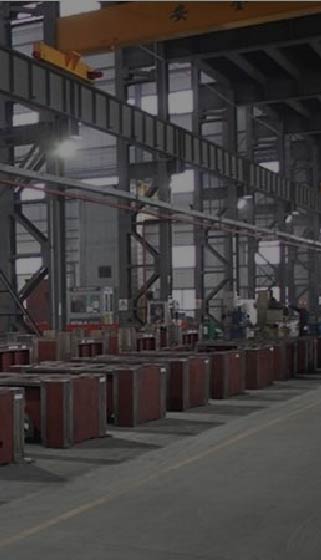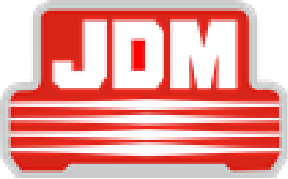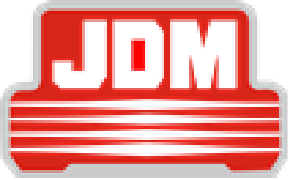







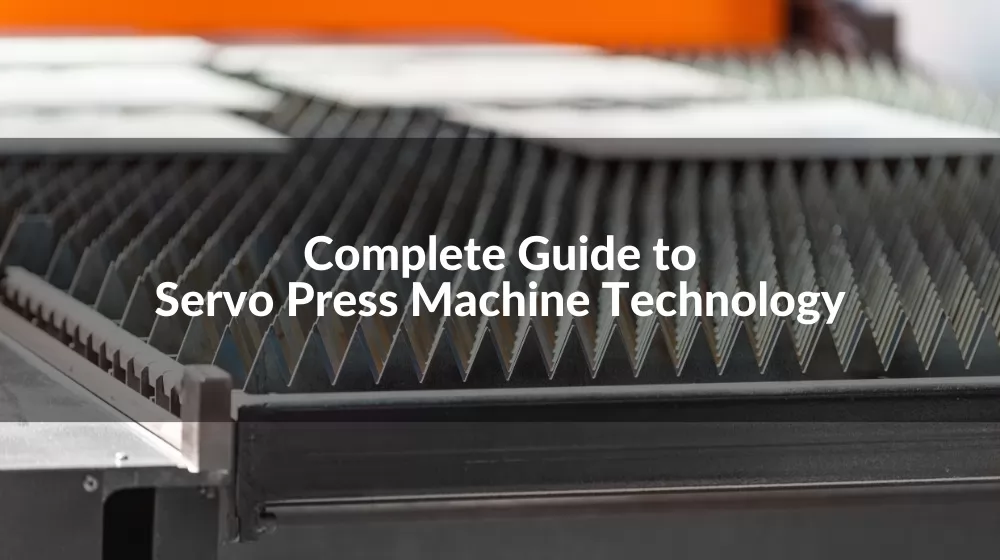
As we've journeyed through the various aspects and applications of Servo Press Machines, it's clear that they are more than just equipment; they are the heart of precision manufacturing. Leading this innovative field is JDM, China's premier Servo Press Manufacturer. At JDM, we are committed to providing state-of-the-art servo press solutions that meet the evolving needs of industries worldwide. Discover our range of high-quality Servo Presses and how they can transform your manufacturing processes by visiting www.jdmpresses.com. Embrace the future of manufacturing with JDM, where precision meets innovation.
When it comes to the realm of manufacturing, precision and efficiency are non-negotiable. That's where Servo Press Machines come into play, revolutionizing the way we approach assembly and production tasks. But what exactly are these innovative machines?
A Servo Press Machine, at its core, is an advanced mechanical device that utilizes a servo motor for its primary movement mechanism. This integration of servo technology allows for unparalleled control over the pressing process. Unlike conventional mechanical or hydraulic presses, a servo press offers precision control of the ram position, speed, and force. This high level of control translates into superior product quality, consistency, and production efficiency.
The versatility of a Servo Press is one of its standout features. It can adapt to various materials and complex pressing applications, making it a favorite in industries ranging from automotive to electronics. The precision of these presses ensures that components are produced with exact specifications, reducing waste and improving overall operational efficiency.
Another key advantage is the energy efficiency of a Servo Press. Unlike traditional presses that continuously run and consume power, a servo press operates on demand, using energy only when the press cycle is active. This not only reduces operational costs but also aligns with sustainable manufacturing practices.
The industrial landscape is evolving, and with it, the tools we use. This evolution is starkly evident when we compare Servo Press Machines to traditional press machines. Understanding these differences is crucial for manufacturers who are striving to stay ahead in a competitive market.
The first point of comparison is control and precision. Traditional press machines, whether mechanical or hydraulic, operate on fixed cycles and forces. They lack the nuanced control that a Servo Press offers. With a servo press, you can program and adjust the ram's position, speed, and force with incredible precision. This level of control is not just about precision; it's about adaptability to different materials and requirements, which is something traditional presses can struggle with.
Energy efficiency is another key differentiator. Traditional presses, especially hydraulic ones, are notorious for their continuous power consumption, even when idle. Servo Presses, on the other hand, consume power only during the actual pressing process. This difference can lead to significant energy savings and a reduction in the overall carbon footprint of your manufacturing operations.
Maintenance and operational lifespan also set these two apart. Traditional presses, due to their design and constant operation, often require more frequent maintenance and part replacements. Servo presses, with fewer moving parts and a more controlled operation, typically enjoy a longer lifespan with less maintenance. This reliability is not just a cost-saving measure; it's a productivity booster.
Lastly, the noise level is a consideration. Traditional presses can be quite loud, contributing to noise pollution in the work environment. A Servo Press, in contrast, operates much more quietly, creating a more pleasant and safe work environment.
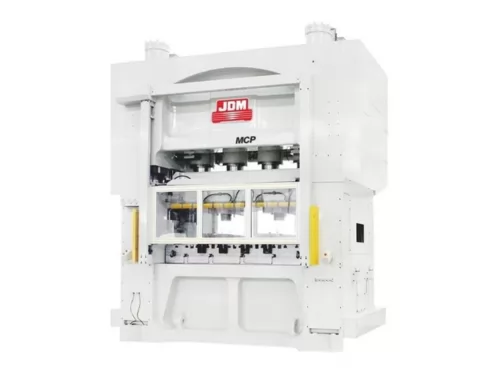
Diving into the heart of Servo Press Machines, it's crucial to understand the core components that make these machines so innovative and efficient. Each component plays a pivotal role in ensuring the precision and versatility that Servo Presses are renowned for.
At the forefront is the Servo Motor. This is the powerhouse of the press, responsible for the precise control of the ram's movement. Servo motors are known for their high efficiency and accuracy, providing the necessary power while allowing for meticulous control over speed and position.
Next is the Ball Screw Assembly. This component converts the rotational motion of the servo motor into linear motion, which is required for the pressing action. The ball screw assembly is key to achieving high precision and low friction during operation, contributing significantly to the overall accuracy and efficiency of the press.
The Control System of a Servo Press is its brain. It allows for programming and customization of the press cycle, including parameters like force, speed, and position. This system ensures that each press cycle is consistent and repeatable, essential for high-quality production runs.
Another vital component is the Load Cell. This sensor measures the force applied during the pressing process, providing real-time feedback to the control system. This feedback loop is crucial for maintaining the precision of the press, ensuring that each cycle is within the desired specifications.
Finally, the Frame and Mechanisms of the press, designed to withstand high forces and maintain alignment, are integral to the machine's durability and performance. A robust frame ensures consistent operation under varying loads and conditions, contributing to the longevity and reliability of the press.
To truly grasp the capabilities of Servo Press Machines, it's essential to delve deeper into the specifics of their key components, namely the Servo Motor, Frame and Structure, and the Control Systems and User Interface.
The Servo Motor is the heart of the Servo Press. It's what sets these machines apart from traditional presses. The servo motor's ability to precisely control the movement and apply force is unmatched. It offers variability in speed and pressure, allowing for a wide range of pressing actions, from delicate placements to forceful insertions. This flexibility makes the servo press suitable for a variety of applications, ensuring both delicate and robust operations are handled with equal finesse.
The Frame and Structure of a Servo Press are designed to offer stability and durability. Made from high-strength materials, the frame ensures that the press can withstand the high forces and stress of continuous operation without compromising on accuracy or alignment. This robust construction is essential for maintaining the longevity and reliability of the machine, even in the most demanding manufacturing environments.
Control Systems and User Interface play a critical role in the operation of Servo Press Machines. The control system is what makes these machines smart. It allows for the programming of specific press cycles, adjustment of parameters, and monitoring of operations. This high level of control and customization is what enables manufacturers to achieve consistent and high-quality results. The user interface, typically intuitive and user-friendly, is the bridge between the operator and the machine. It allows for easy programming, real-time monitoring, and quick adjustments, ensuring that the machine's operation is as efficient as the technology it employs.
In the diverse world of manufacturing, different applications require different types of presses. This is where the variety in Servo Press Machines comes into play, notably in the form of Single Point and Multi-Point Servo Presses. Each type has its unique advantages and specific use-cases.
Single Point Servo Presses are characterized by having a single ram that applies force. This design makes them ideal for simpler, straightforward tasks where precision and control over a single point of contact are required. They are commonly used in operations like stamping, forming, and bending. The single point design also tends to make these machines more compact and cost-effective, making them a popular choice for smaller operations or tasks with less complexity.
On the other hand, Multi-Point Servo Presses feature multiple rams, allowing them to apply force at several points simultaneously. This capability is essential for more complex tasks that require uniform application of force across a larger area or multiple points. Applications such as large panel stamping, complex forming, and assembly operations where uniform force distribution is critical, are where these presses excel. The multi-point design, while typically more expensive and larger, offers unparalleled versatility and efficiency for complex manufacturing tasks.
When comparing the two, the primary considerations are the complexity of the task and the scale of production. Single Point Servo Presses are more suited for smaller scale, less complex tasks, whereas Multi-Point Servo Presses are the go-to for large-scale, complex manufacturing needs. It's also important to consider the investment and operational costs. Single point presses, being simpler, are generally less expensive and easier to maintain, making them a cost-effective solution for many businesses. In contrast, multi-point presses, with their advanced capabilities, represent a higher initial investment but can deliver greater efficiencies and capabilities in the right setting.
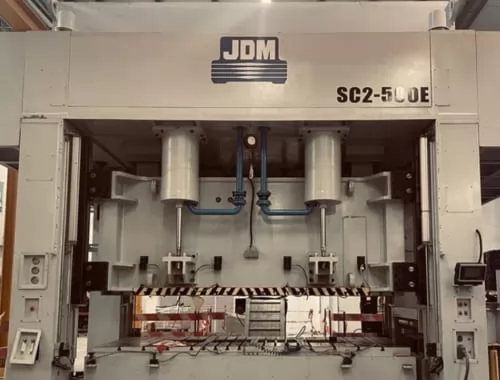
To fully appreciate the ingenuity behind Servo Press Machines, a closer look at the mechanics of their operation is essential. This involves understanding how servo motors power the press, the intricacies of motion control and precision, and the resulting advantages in speed and efficiency.
The Servo Motor is the driving force of a Servo Press. Unlike traditional motors, servo motors are capable of precise control over both speed and position. This is achieved through a sophisticated feedback system that continuously monitors and adjusts the motor's operation. The motor powers the ram of the press, converting electrical energy into mechanical force with exceptional precision. This allows for intricate control over the pressing process, accommodating a wide range of materials and applications.
Motion control in a Servo Press is about more than just moving the ram up and down. It's about controlling that movement to exact specifications. The servo motor, in conjunction with the control system, can dictate the ram's speed, position, and force, allowing for highly precise operations. This level of control is crucial for tasks that require a high degree of accuracy, such as forming complex shapes or assembling delicate components.
The precision and control offered by servo motors translate into significant advantages in both speed and efficiency. Servo Presses are capable of rapid yet controlled movements, reducing cycle times and increasing throughput. Moreover, the accuracy they provide reduces waste and rework, enhancing overall efficiency. These factors combined make servo presses not only faster but also more cost-effective in the long run, providing a competitive edge in today’s fast-paced manufacturing environment.
A critical aspect of the efficiency and effectiveness of Servo Press Machines lies in their material handling capabilities. Understanding the types of materials these machines can process, the mechanisms used for material feeding, and the impact of the pressing process on material properties is essential for optimizing production.
Servo Press Machines are versatile when it comes to the types of materials they can handle. Metals like steel, aluminum, and brass are commonly processed in these machines, especially in industries such as automotive and aerospace manufacturing. However, their precision control also makes them suitable for working with more delicate materials like composites and plastics, which are prevalent in electronics and consumer goods manufacturing. This versatility is a significant advantage, allowing for a wide range of applications across various industries.
The material feeding mechanisms in a Servo Press are just as crucial as the pressing action itself. These mechanisms ensure consistent and accurate placement of materials before each press cycle. Common feeding systems include roll feeds, gripper feeds, and even robotic arms for more complex tasks. The choice of feeding mechanism depends on the material type, size, and the specific requirements of the production process. These feeding systems, integrated with the servo control, contribute to the overall precision and efficiency of the press.
One of the most significant advantages of Servo Presses is their gentle yet firm impact on material properties. The precise control of force and speed ensures that materials are not over-stressed, which is crucial for maintaining their integrity and properties. This is particularly important when working with materials that are sensitive to stress and deformation, such as certain metals and composites. The ability to fine-tune the pressing process means that the final products are of higher quality, with reduced risk of defects or material fatigue.
The hallmark of Servo Press Machines is their unparalleled precision and control. This chapter delves into how these machines achieve high precision, the methods used to control force and position, and the role of feedback systems and adjustments in maintaining consistent quality.
High precision in Servo Presses is attained through the integration of advanced servo motors and finely-tuned control systems. These components work in harmony to ensure that the press operates with exacting accuracy. Whether it's forming intricate components or assembling delicate electronics, the servo press can maintain a high level of precision, ensuring that each piece is consistent with the last. This precision is not just about the end product; it's about minimizing waste and maximizing efficiency in the production process.
Controlling force and position is at the core of a Servo Press's functionality. The servo motor enables precise control over the amount of force applied and the position of the ram throughout the pressing process. This level of control allows for the fine-tuning of the press to accommodate different materials and product requirements, ensuring that the force applied is neither too much nor too little, and the position is always accurate.
Feedback systems are integral to the precision of Servo Presses. These systems constantly monitor various parameters like force, speed, and position during operation. If any deviations from the set parameters are detected, the system makes real-time adjustments to correct them. This not only ensures that each press cycle is consistent but also allows for quick adaptation to any changes in material or environmental conditions. This feedback loop is key to maintaining the high standards of quality and efficiency that are expected from servo press technology.
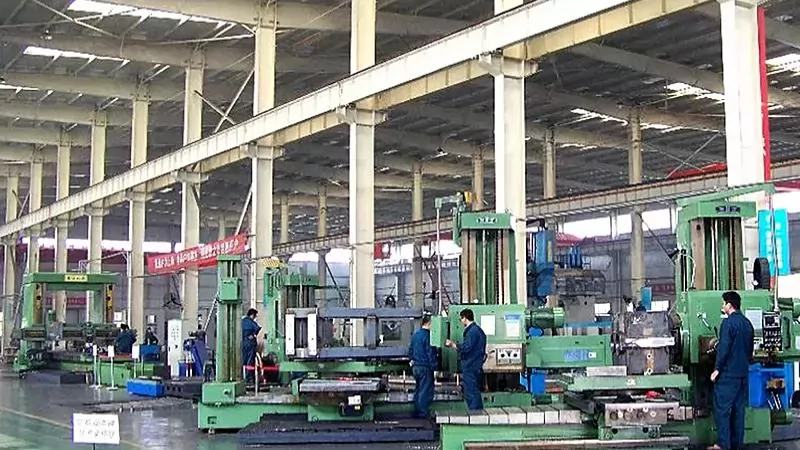
The versatility and precision of Servo Press Machines make them invaluable in a variety of industries. In this chapter, we explore their applications in the Automotive Industry, Electronics and Semiconductor Manufacturing, and Aerospace and Defense sectors.
In the Automotive Industry, the need for precision and efficiency is paramount. Servo Presses are extensively used for tasks such as metal forming, assembly, and stamping of automotive parts. Their precision ensures that each component meets stringent quality standards, while their efficiency enhances production speed, a crucial factor in this fast-paced industry. The ability to adjust the press for different materials and designs makes them ideal for producing a wide range of automotive parts.
In the realm of Electronics and Semiconductor Manufacturing, the applications of Servo Presses are critical. These industries demand extreme precision, especially when working with delicate components and intricate assemblies. Servo Presses provide the necessary control and gentle handling required for such tasks, ensuring high-quality production of electronic devices and semiconductor wafers. The ability to precisely control force and position is especially beneficial in minimizing damage during the assembly process.
The Aerospace and Defense sectors require components that meet exceptionally high standards of quality and precision. Servo Presses play a vital role in the manufacturing of parts for aircraft and defense equipment. The precision offered by these machines ensures that each part can withstand the extreme conditions of aerospace and defense applications. The adaptability of Servo Presses to different materials and complex shapes makes them indispensable in this field, where innovation and precision are constantly in demand.
While Servo Press Machines offer numerous advantages, like any technology, they come with their own set of challenges and limitations. Understanding these aspects is crucial for manufacturers to optimize their use and anticipate potential issues.
One of the primary challenges lies in the initial investment cost. Servo Presses, with their advanced technology and components, tend to be more expensive than traditional press machines. This can be a significant factor for small to medium-sized businesses or those just starting in the manufacturing industry.
Technical complexity and the need for skilled operators is another challenge. The sophisticated control systems and advanced features of Servo Presses require a higher level of expertise to operate and maintain. This necessitates training and sometimes a longer learning curve for staff, which can be a resource investment for some companies.
Additionally, while servo presses are highly versatile, they may not always be the best fit for every manufacturing need. For instance, in operations where extremely high force is required, traditional mechanical or hydraulic presses might be more suitable. It's important to carefully assess the specific needs of the task at hand when considering a servo press.
Maintenance and repair of Servo Press Machines can also present challenges. Due to their complex nature, servicing these machines often requires specialized knowledge and parts, which can lead to higher maintenance costs and longer downtimes in case of breakdowns.
Choosing the right Servo Press Manufacturer is a crucial decision that can significantly impact the efficiency, quality, and success of your manufacturing operations. In a market filled with numerous options, it’s important to know what factors to consider to make an informed choice.
First and foremost, evaluate the technological expertise of the manufacturer. A reputable Servo Press manufacturer should have a proven track record of innovation and quality. Look for companies that invest in research and development, offering the latest advancements in servo press technology.
Customer service and support are equally important. A good manufacturer doesn’t just sell machines; they provide ongoing support, maintenance, and training. Assess their responsiveness to customer inquiries and their ability to provide support and service after the purchase.
Additionally, consider the range of products offered. A diverse product line indicates the manufacturer's capability to cater to various needs and applications. It’s beneficial to choose a manufacturer that can offer a wide range of servo presses, from single-point to multi-point systems, tailored to different industrial requirements.
Quality certifications and compliance with international standards are also key indicators of a reliable manufacturer. Certifications like ISO demonstrate a commitment to quality and consistency in manufacturing processes.
Lastly, consider the manufacturer's reputation in the market. Client testimonials, case studies, and reviews can provide valuable insights into the manufacturer's reliability and the performance of their machines.
As we've journeyed through the various aspects and applications of Servo Press Machines, it's clear that they are more than just equipment; they are the heart of precision manufacturing. Leading this innovative field is JDM, China's premier Servo Press Manufacturer. At JDM, we are committed to providing state-of-the-art servo press solutions that meet the evolving needs of industries worldwide. Discover our range of high-quality Servo Presses and how they can transform your manufacturing processes by visiting www.jdmpresses.com. Embrace the future of manufacturing with JDM, where precision meets innovation.


